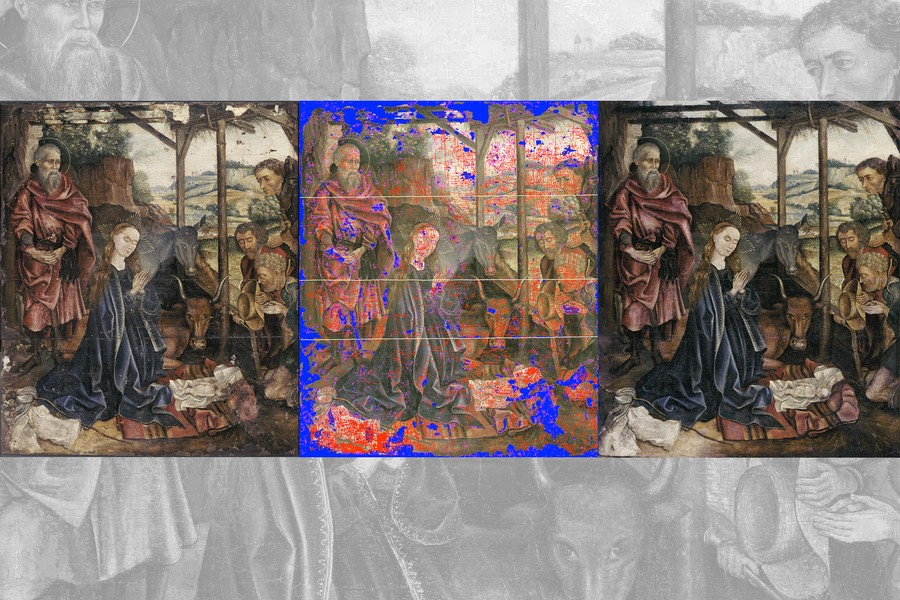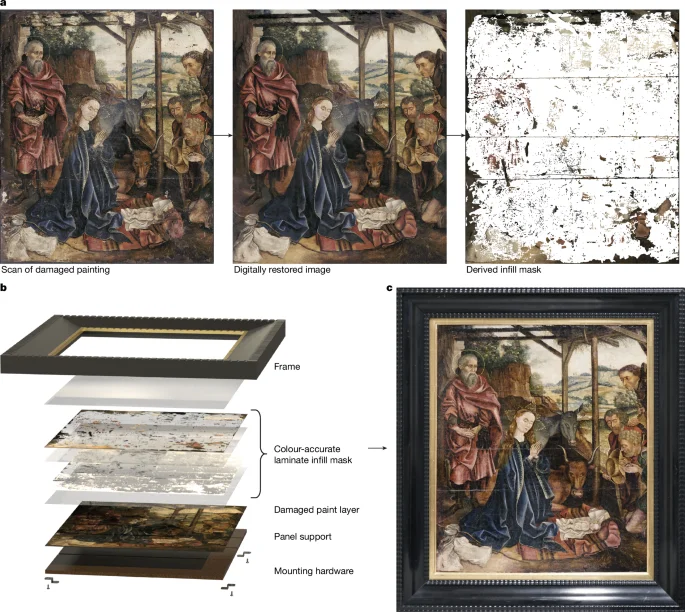
(Photo: Smithsonian magazine)
US scientists have tested a new technique on a badly damaged 15th-century oil painting using digital masking - a technological advance that helps restore ancient paintings faster and more accurately - without altering the original.
According to Mit News, restoring art is a demanding job that requires a steady hand and a keen eye. For centuries, ancient paintings were restored by identifying the areas that needed repair and then mixing precise paints to fill in each area at a time. Often, a painting can have thousands of small areas that need detailed repair. Restoring a painting can take weeks, months, or even more than a decade.
Researchers have tested a digital masking method to repair damaged images on a 15th-century painting. Instead of spending hours cleaning, analyzing, and retouching, the process took just three and a half hours. The method works by digitally recreating the missing parts of the painting, then printing them onto a plate with the correct colors. The mask is placed directly on the damaged artwork, restoring the image without altering the original. The process uses more than 57,000 unique colors and covers more than 66,000 square millimeters.

Currently, this method is effective on paintings with smooth, varnished surfaces. Experts say this method can help museums restore more works. At the same time, it is hoped that the physical restoration process combined with digital technology will open a new era for future art conservation./.
Source: https://baogialai.com.vn/cong-nghe-dot-pha-phuc-che-tranh-co-chi-trong-vai-gio-post328570.html

























![[Photo series] Bu Gia Map National Park "tells stories" of changing seasons](https://vphoto.vietnam.vn/thumb/402x226/vietnam/resource/IMAGE/2025/11/08/1762556754197_ttttttttttttttttt_20251107112659.jpeg)













![[Photo] Da Nang: Hundreds of people join hands to clean up a vital tourist route after storm No. 13](https://vphoto.vietnam.vn/thumb/1200x675/vietnam/resource/IMAGE/2025/11/07/1762491638903_image-3-1353-jpg.webp)

![[Video] Hue Monuments reopen to welcome visitors](https://vphoto.vietnam.vn/thumb/402x226/vietnam/resource/IMAGE/2025/11/05/1762301089171_dung01-05-43-09still013-jpg.webp)





































































Comment (0)